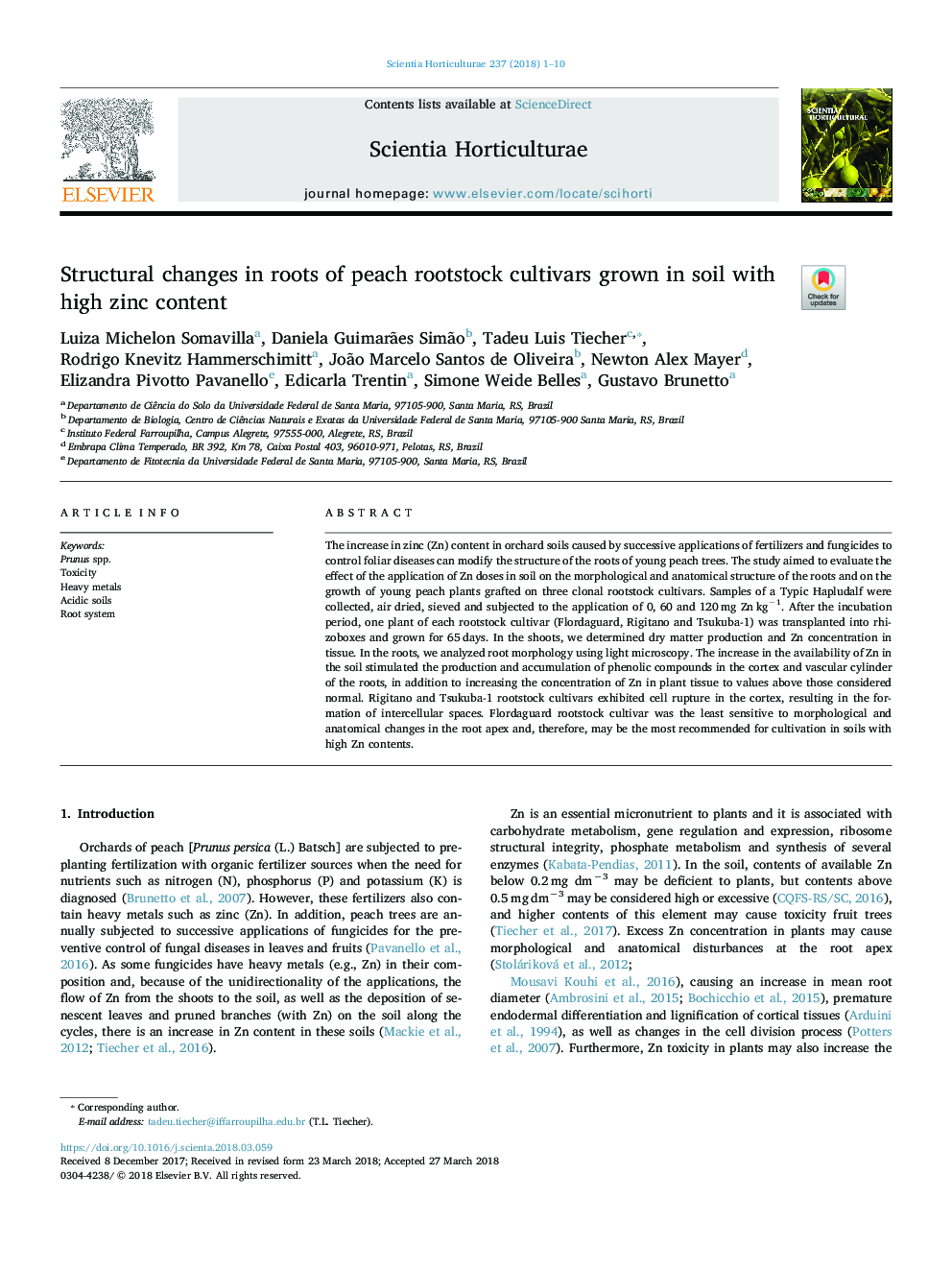| Article ID | Journal | Published Year | Pages | File Type |
|---|---|---|---|---|
| 8892536 | Scientia Horticulturae | 2018 | 10 Pages |
Abstract
The increase in zinc (Zn) content in orchard soils caused by successive applications of fertilizers and fungicides to control foliar diseases can modify the structure of the roots of young peach trees. The study aimed to evaluate the effect of the application of Zn doses in soil on the morphological and anatomical structure of the roots and on the growth of young peach plants grafted on three clonal rootstock cultivars. Samples of a Typic Hapludalf were collected, air dried, sieved and subjected to the application of 0, 60 and 120â¯mg Znâ¯kgâ1. After the incubation period, one plant of each rootstock cultivar (Flordaguard, Rigitano and Tsukuba-1) was transplanted into rhizoboxes and grown for 65â¯days. In the shoots, we determined dry matter production and Zn concentration in tissue. In the roots, we analyzed root morphology using light microscopy. The increase in the availability of Zn in the soil stimulated the production and accumulation of phenolic compounds in the cortex and vascular cylinder of the roots, in addition to increasing the concentration of Zn in plant tissue to values ââabove those considered normal. Rigitano and Tsukuba-1 rootstock cultivars exhibited cell rupture in the cortex, resulting in the formation of intercellular spaces. Flordaguard rootstock cultivar was the least sensitive to morphological and anatomical changes in the root apex and, therefore, may be the most recommended for cultivation in soils with high Zn contents.
Related Topics
Life Sciences
Agricultural and Biological Sciences
Horticulture
Authors
Luiza Michelon Somavilla, Daniela Guimarães Simão, Tadeu Luis Tiecher, Rodrigo Knevitz Hammerschimitt, João Marcelo Santos de Oliveira, Newton Alex Mayer, Elizandra Pivotto Pavanello, Edicarla Trentin, Simone Weide Belles, Gustavo Brunetto,
